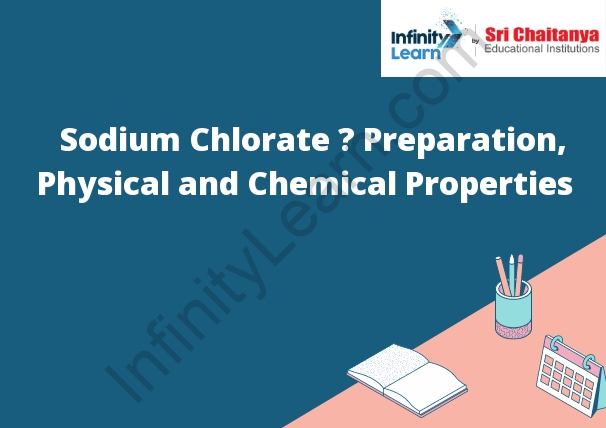Table of Contents
What is Sodium Chlorate ;
Sodium Chlorate is an inorganic compound with the formula NaClO3. It is a white solid that is soluble in water. Sodium Chlorate – Preparation.
Sodium chlorate is an inorganic compound with the formula NaClO3. It is a white solid that is soluble in water. It is produced industrially by the electrolysis of sodium chloride solutions. Sodium chlorate is used in the production of chlorine dioxide, in the production of paper, and as a bleach. Sodium chlorate is a salt of chlorine dioxide (ClO2) and sodium (Na+). The sodium ion is responsible for the solubility of sodium chlorate in water. The chlorine dioxide ion is a strong oxidizer that can oxidize many organic and inorganic compounds.

Preparation of Sodium Chlorate
Sodium chlorate is prepared by the electrolysis of a sodium chloride solution using a platinum anode and a graphite cathode. The electrolysis of a sodium chloride solution produces chlorine gas and sodium hydroxide.
Industrially, sodium chlorate is produced by the electrolysis of concentrated sodium chloride solutions. All other processes are obsolete. The sodium chlorate process is not to be confused with the chloralkali process, which is an industrial process for the electrolytic production of sodium hydroxide and chlorine gas.
The overall reaction can be simplified to the equation:
First, chloride is oxidised to form intermediate hypochlorite, ClO−, which undergoes further oxidisation to chlorate along two competing reaction paths: (1) Anodic chlorate formation at the boundary layer between the electrolyte and the anode, and (2) Autoxidation of hypochlorite in the bulk electrolyte.
Under electrolysis hydrogen and sodium hydroxide are formed at the cathode and chloride ions are discharged at the anode (mixed metal oxide electrode is often used). The evolved chlorine does not escape as a gas but undergoes hydrolysis:
The hydrolysis of chlorine is considered to be fast. The formation of H+ ions should make the boundary layer at the anode strongly acidic and this is observed at low chloride concentrations. However, large concentrations of chloride, as they occur in industrial chlorate cells, shift the hydrolysis equilibrium to the left. At the boundary layer the concentration of H+ is not high enough to permit diffusion into the bulk electrolyte. Therefore hydrogen is transported away from the anode mostly as hypochlorous acid rather than H+. The hypochlorous acid dissociates in the bulk electrolyte where the pH is high and the hypochlorite ion diffuses back to the anode. More than two thirds of the hypochlorite is consumed by buffering before reaching the anode. The remainder is discharged at the anode to form chlorate and oxygen:
The autoxidation of hypochlorous acid in the bulk electrolyte proceeds according to the simplified overall equation:
It is preceded by the dissociation of a part of the hypochlorous acid involved:
The reaction requires a certain distance from the anode to occur to a significant degree, where the electrolyte is sufficiently buffered by the hydroxyl formed at the cathode. The hypochlorite then reacts with the rest of the acid:
In addition to anode distance the autoxidation also depends on temperature and pH. A typical cell operates at temperatures between 80 °C and 90 °C and at a pH of 6.1–6.4.
Independent of the reaction route the discharge of 6 mol of chloride is required to yield 1 mol of chlorate. However, the anodic oxidation route requires 50% additional electric energy. Therefore, industrial cells are optimised to favour autoxidation. Chlorate formation at the anode is treated as a loss reaction and is minimised by design.
Sodium Chlorate – Preparation.





